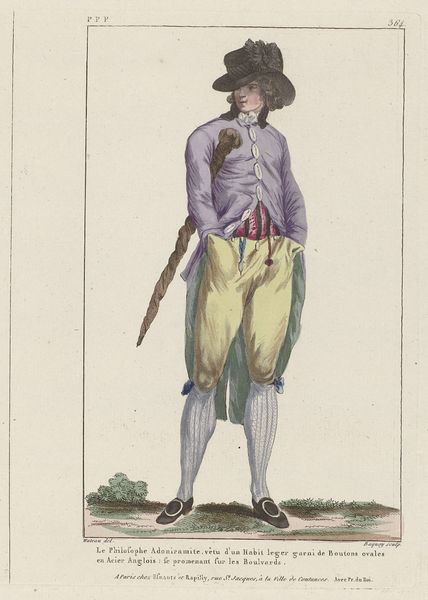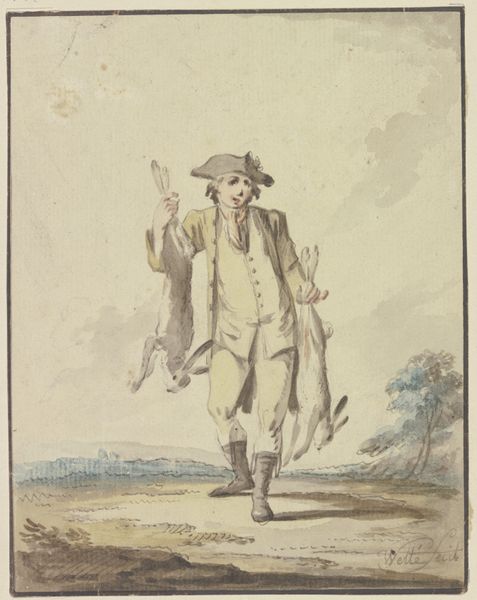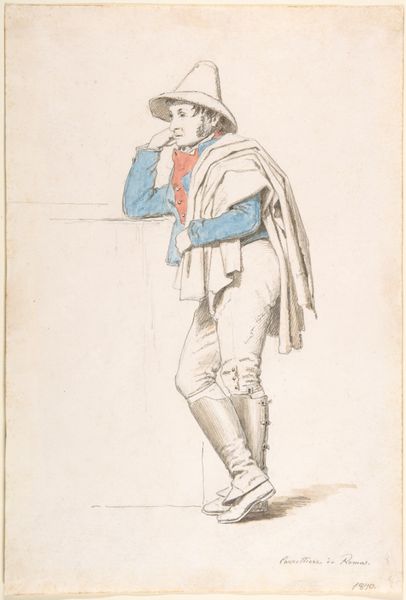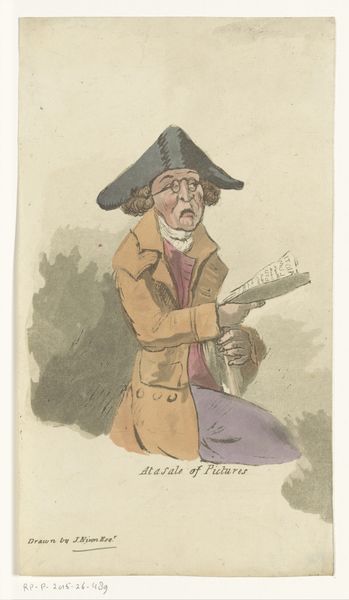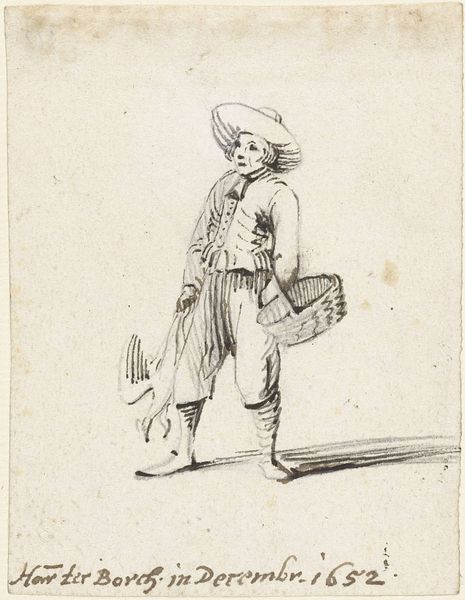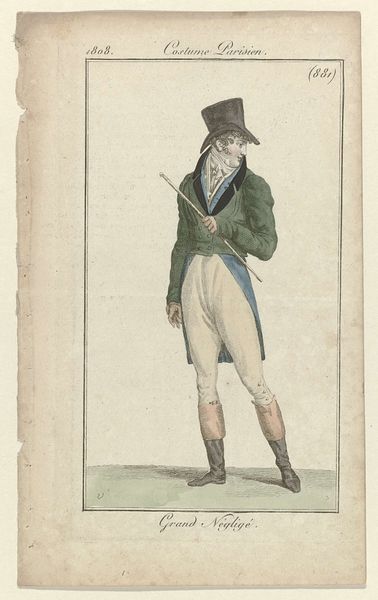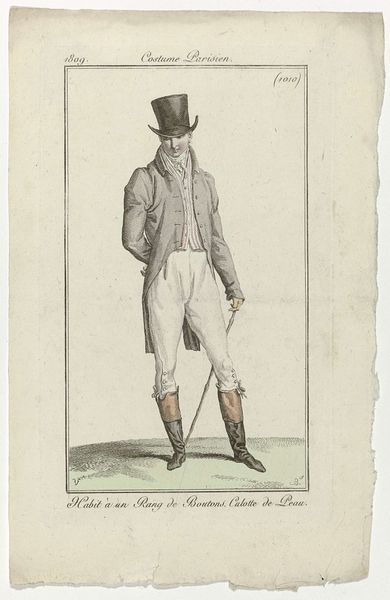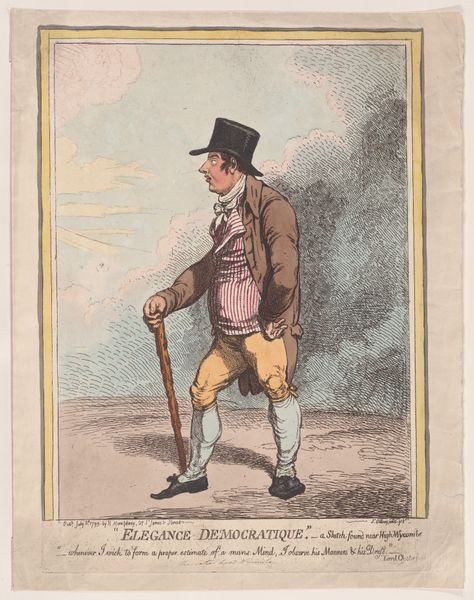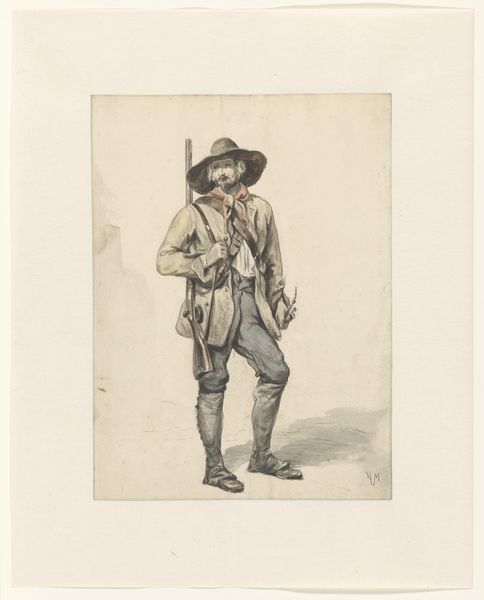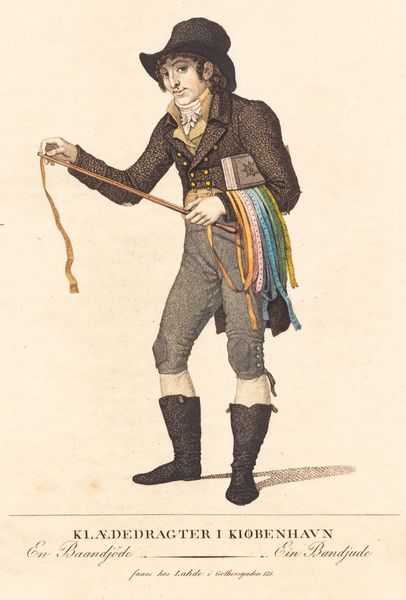
drawing, watercolor
#
portrait
#
drawing
#
imaginative character sketch
#
neoclacissism
#
aged paper
#
toned paper
#
light pencil work
#
quirky sketch
#
pencil sketch
#
personal sketchbook
#
watercolor
#
idea generation sketch
#
sketchbook drawing
#
pencil work
#
genre-painting
Dimensions: height 185 mm, width 131 mm
Copyright: Rijks Museum: Open Domain
Editor: This is "Sicileense man in plaatselijk klederdracht" or "Sicilian man in local dress", a drawing by Louis Ducros from 1778. It's a watercolor and pencil sketch, seemingly simple. What I find fascinating is the contrast between the apparent ordinariness of the subject, a man in traditional clothing, and the implied layers of cultural context. What's your take on it? Curator: I’m interested in unpacking the “ordinariness” you’ve identified, considering what it reveals about 18th-century European perspectives on Sicily. Ducros, a Swiss artist, depicted this man within a framework of Neoclassicism. Consider how the "local dress," rather than simply being a neutral descriptor, becomes a marker of difference. How does this image engage with emerging ethnographic interests and perhaps, a subtle exoticization of Southern Italy? Editor: I see what you mean. It's like he’s cataloging him. Almost as if this is a character in a play. He's 'othered' through this kind of…artistic study? Is that too strong? Curator: Not at all. Think about the power dynamics at play. Ducros, likely from a privileged background, is visually "capturing" a Sicilian man. Is he truly representing him or is he creating a representation *for* a specific audience, one that likely held preconceived notions about Sicily and its people? Does the ‘imaginative character sketch’ here feed or challenge existing stereotypes? And to what end? Editor: So, it's not just a simple portrait but a complex statement about cultural identity and the power of representation? I hadn't considered that level of depth at first. Curator: Exactly. This drawing, at first glance, might seem like a straightforward depiction, but when viewed through a critical lens, we can unpack its layered meanings, including its role in constructing narratives about identity, culture, and the ever-present dynamic between the observer and the observed. It reflects more of Ducros' view of Sicily, than Sicily itself, maybe. Editor: I'm definitely seeing it differently now. It's a reminder that even seemingly simple images can hold really complex social and historical weight. Curator: Absolutely. Art, even in a sketch, often reflects the complex web of societal values and power structures, if we only choose to look.
Comments
No comments
Be the first to comment and join the conversation on the ultimate creative platform.
